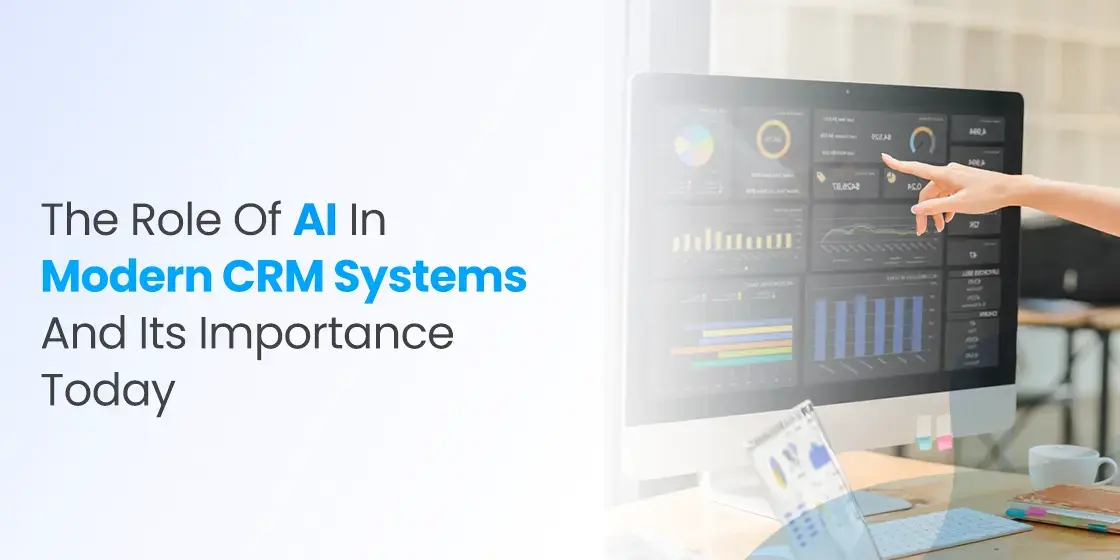Table of Content
Enhance Your Understanding About Cloud Adoption Framework in Detail Below
The emergence of cloud technology has done wonders for the commercial world. Many businesses have elevated their operations by using cloud adoption framework. It is a process that allows you to integrate cloud architecture in your business. It requires you to take advanced software development services from any renowned agency that has got good experience in cloud integration. There are numerous benefits of adopting this framework, in which the biggest one is the bringing of automation in business processes.
Apart from that, cloud adoption also helps companies to reduce their operational cost. This mainly happens due to the reduction of unused resources. A lot of companies are moving towards cloud due to this sole benefit. It is something that allows them to employ more resources that are essential for the operations. That is how smart utilization of resources can be done without overburdening anything on the project cost.
If you are also looking to innovate your business using cloud adoption framework, you must need to read this blog first. It will let you know about the whole process that should be followed for cloud adoption. Let us first start from the basics understanding what is cloud adoption framework and why it is becoming popular in the industry.
What is Cloud Adoption Framework?

A Cloud Adoption Framework (CAF) serves as a comprehensive resource encompassing best practices, tools, and guidance essential for organizations embarking on the integration of cloud technologies. The transition to cloud computing presents formidable challenges, ranging from the persistence of legacy technologies to intricate dependencies among applications, pre-existing bottlenecks within infrastructure, and gaps in knowledge and skillsets.
The CAF acts as a strategic roadmap, aiding organizations in navigating these complexities by identifying and mitigating potential risks, managing costs effectively, and ensuring compliance throughout the process of migrating their workloads to the cloud. Moreover, the framework goes beyond mere migration assistance; it offers valuable insights on optimizing governance and enhancing security measures in the cloud, ultimately contributing to heightened operational efficiency.
One of the primary functions of the Cloud Adoption Framework is to assist organizations in understanding and overcoming the multifaceted challenges associated with transitioning to cloud-based solutions. Legacy technologies often hinder seamless migration, and the intricate web of application interdependencies complicates the process further. Additionally, existing bottlenecks in infrastructure and the presence of knowledge and skill gaps within the organizational workforce pose significant hurdles.
Understanding Different Types of Cloud Adoption Models

Cloud adoption framework is divided into different models. This is basically done to give convenience to every business, so that they can choose their desired models efficiently. All of these models are created for different purposes, meaning that you need to choose them after first looking at your own company’s functional requirements. Here are some of them defined below.
Multi-Cloud Model
This model serves the purpose of equitably distributing workloads across various public cloud providers, irrespective of the presence or absence of an existing private cloud infrastructure. The rationale behind adopting a multi-cloud approach lies in its ability to provide enhanced flexibility while safeguarding against the potential challenges associated with vendor lock-in. By strategically spreading workloads across multiple public cloud providers, organizations can mitigate the risks associated with relying solely on a single vendor, fostering a more resilient and adaptable IT environment.
The multi-cloud adoption model goes beyond merely distributing workloads. It also addresses the need for flexibility in cloud deployment. This approach accommodates organizations with or without an established private cloud, allowing them to seamlessly integrate public cloud services into their existing infrastructure. The result is a versatile and agile system that not only optimizes resource utilization but also minimizes dependency on any single cloud provider.
Poly-Cloud Model
The strategic implementation of a cloud adoption model centered around multi-cloud architectures empowers businesses to meticulously allocate diverse workloads across various cloud providers. This nuanced approach allows organizations to optimize their cloud utilization based on specific requirements. Simultaneously, they can utilize the extensive suite of services provided by Amazon Web Services (AWS) Cloud for more standard computing tasks, taking advantage of AWS’s well-established infrastructure and comprehensive service offerings.
In essence, this multi-cloud adoption model goes beyond a one-size-fits-all approach, enabling organizations to tailor their cloud strategy to the specific demands of different workloads. By strategically aligning workloads with the strengths of various cloud providers, businesses can enhance overall operational efficiency and performance while tapping into the specialized features and capabilities offered by each cloud platform.
Industry Cloud Model
The concept encompasses a wide range of domain-specific cloud enablement services, tools, and applications meticulously tailored and optimized for specific use cases relevant to particular business domains. This comprehensive approach aims to cater to the unique needs and challenges faced by various industries, offering specialized solutions that go beyond generic cloud services. An illustrative example of this targeted collaboration is the partnership between SAP and Microsoft.
In essence, the broad spectrum of domain-specific cloud enablement services represents a shift towards more specialized and tailored solutions. This approach allows organizations to benefit from cloud technologies that are not only versatile but also finely tuned to meet the unique challenges and objectives of enterprise application modernization. The collaboration between SAP and Microsoft serves as a prime example of this trend, showcasing how industry-specific solutions can be seamlessly integrated.
Hybrid Cloud Model
The cloud adoption model in question finds deployment among a significant majority, specifically three out of every four enterprises. This preference is particularly evident among organizations utilizing on-premises infrastructure or adopting a hybrid approach that combines both private and public cloud services, with prominent platforms like Microsoft Azure and Amazon Web Services (AWS) being key players in this landscape.
In essence, this widely adopted cloud model reflects the prevailing trend among enterprises to embrace a flexible infrastructure strategy that incorporates both on-premises and cloud environments. The model’s deployment by three-quarters of enterprises signifies its resonance across varied industries and organizational structures. By supporting integration with major cloud platforms, this adoption model caters to the diverse requirements of enterprises.
Cloud Adoption Strategy: Important Steps to Consider

To integrate cloud services in your operations architecture, you need to follow a precised strategy. This strategy is important, as it ensures smooth transformation towards cloud without facing any hassle. If you do not know which strategy should be followed for cloud adoption, take a look at the points defined in detail below.
Detailed Evaluation
The initial phase of the cloud adoption strategy involves a comprehensive evaluation of the potential impact across critical domains of your business. This thorough assessment is instrumental in determining the feasibility and suitability of leveraging the cloud for your organization. It is imperative to engage experts in this phase to ensure an in-depth analysis that takes into account the intricacies of your existing infrastructure, security protocols, and financial considerations.
By evaluating the impact on safety, organizations can identify and address potential vulnerabilities, ensuring that the migration to the cloud does not compromise data integrity or pose security risks. Simultaneously, assessing the impact on architecture allows for the alignment of cloud adoption with the existing IT framework, ensuring a seamless integration that optimizes performance and functionality.
Proof of Concept
In the comprehensive journey of transitioning to cloud-based operations, a pivotal stage involves the meticulous development of a cloud adoption plan tailored specifically for your organization. This plan, presented in the form of a Proof of Concept (POC), serves as a critical blueprint for the successful integration of cloud technologies into your existing infrastructure. During this phase, it is imperative to allocate sufficient time and resources to carefully introduce the POC to your team members.
The initiation of the cloud adoption plan hinges on a methodical and thorough presentation of the POC, ensuring that every team member comprehends the intricacies of the proposed transition. Beyond the technical facets, emphasis should be placed on elucidating the broader strategic advantages and potential organizational benefits associated with embracing cloud technologies.
Migrate Company Data
Achieving a successful transition to the cloud involves a thoughtful consideration of the available storage options, with a keen eye on selecting a secure solution that aligns with your budgetary constraints. Delving into the nuances of storage alternatives is crucial, as it allows for a strategic assessment of how each option can cater to the specific needs and demands of your organization.
Once the optimal storage solution has been identified, the next crucial step in the cloud migration process is to verify the integrity of your data. This involves a comprehensive assessment to guarantee that all critical information remains intact and unaltered during the migration process. Rigorous testing and validation mechanisms should be implemented to mitigate cloud migration challenges. Only after ensuring the absolute integrity of your data, you can confidently proceed with the complete cloud migration.
Application Migration
During this pivotal stage of the cloud adoption journey, it becomes imperative to meticulously select the migration approach that aligns seamlessly with the specific requirements of your organization. The available migration types encompass a spectrum of options, ranging from the straightforward lift to more intricate processes. Each of these alternatives carries distinct advantages and considerations, necessitating a comprehensive evaluation to determine the most appropriate strategy for your organizational context.
The diverse migration types available underscore the multifaceted nature of transitioning to the cloud. Lift and shift migration involves moving applications and data to the cloud without making significant modifications, whereas platforming entails adapting applications for optimal performance in the cloud environment. Repackaging involves reconfiguring applications for cloud compatibility, and retaining involves maintaining certain components on-premises while migrating others to the cloud.
Core Benefits of Cloud Adoption Framework

Cloud adoption framework brings plenty of benefits for the companies. It is specifically suited for those that are not well versed with the idea of managing everything on their own. Cloud framework brings everything to their ease, so that they don’t have to bother about manual product management process anymore.
Streamlined Innovation
The implementation of a cloud adoption framework empowers businesses to rapidly capitalize on the inherent scalability and flexibility offered by cloud-based infrastructure. This strategic approach not only streamlines the overall duration but also minimizes the effort required to attain cloud-centric objectives. By embracing this framework, organizations gain the agility to expedite the realization of innovative concepts and broaden their customer reach in the market.
The advantages of a cloud adoption framework extend beyond mere operational enhancements. The ability to swiftly bring new ideas to fruition in the market signifies a transformative shift, allowing enterprises to adapt to changing consumer demands and technological landscapes with unparalleled speed. This not only facilitates the exploration of untapped opportunities but also cultivates an environment conducive to continuous innovation.
Zero Operational Risk
In the process of transitioning your business operations to the cloud, it is imperative to identify and address various potential risk areas. Among these, the maintenance of robust data security and privacy stands out as a crucial consideration at every stage of the migration journey. The meticulous planning of cloud migration becomes paramount to circumvent any potential application downtime and minimize disruptions to ongoing business activities.
The cloud adoption framework plays a pivotal role in ensuring that companies possess a nuanced understanding of the diverse standards and requirements. By leveraging a CAF, businesses can optimize their approach to cloud adoption, achieving a delicate balance that not only mitigates risks but also enhances key aspects of their operational landscape. This includes improvements in reliability, heightened performance levels, and strengthened security protocols.
Top-notch Agility
A cloud adoption framework stands as a valuable resource for businesses seeking a well-defined and meticulously structured pathway for their digital transformation endeavors. Functioning as a guiding framework, the CAF not only formulates a comprehensive cloud adoption strategy but also meticulously outlines the key steps involved in the process. Its structured approach serves as a roadmap, offering businesses a clear trajectory for navigating the complexities of digital transformation.
Within the context of a CAF, the integration of security measures serves as a catalyst for streamlining and expediting the cloud journey. The framework facilitates continuous improvement initiatives by providing a structured environment where lessons learned from each stage of the digital transformation process can inform subsequent actions.
Give Your Business the Cloud Edge with BariTechSol
BariTechSol is one of the leading names in the circuit where you can get all types of cloud based solutions for your business. We have been working in this industry from quite some of time, hence our experts fully understand the pros and cons of every cloud component.
With BariTechSol, you are always assured to get top-notch cloud integrations and deployment solutions tailored according to your business. Get in touch with our experts now and know how our services can help you to scale the digital success.
Frequently Asked Questions
| What is cloud adoption framework? Cloud adoption framework refers to a complete process that helps you to move towards cloud in an efficient manner. This process is highly organized, hence it is preferred by majority of the cloud experts for integration and deployment. |
| Why is cloud adoption framework important? Cloud adoption framework is important because it lets you know a complete pathway how cloud integration should be done. It is an important guide for those who are new to the field of cloud having little knowledge of deployment. |
| What are the benefits of cloud adoption? There are plenty of benefits of cloud adoption. Firstly, it reduces your operational cost and minimizes the overhead budget. Secondly, it provided better resource management, as well as automation of all the administrative tasks. |
Final Words
That takes us to the end of this blog in which we have discussed about cloud adoption framework in detail. As a business administrator, it is very important for you to understand how cloud adoption framework works. This technology needs to be integrated by following a precised strategy, hence the adoption model is created by the experts to streamline cloud transformation.
If you are also looking for an agency that offers quality cloud integration and deployment services, get in touch with us today. We will help you to leverage the power of cloud by providing cutting-edge cloud-based solutions.
Empower your digital initiatives with BariTechSol, a premier custom software development company. Our skilled team tailors cutting-edge solutions to your unique needs. Elevate your tech experience and stay ahead in the digital realm. Partner with BaritechSol and code the success of your next big idea.


